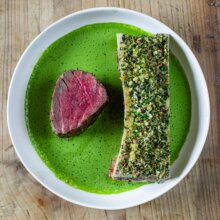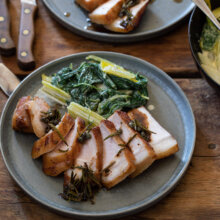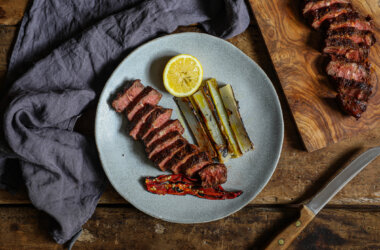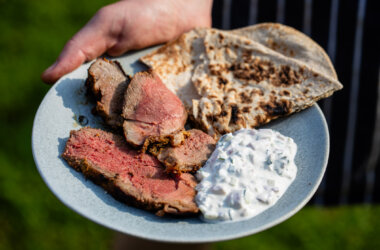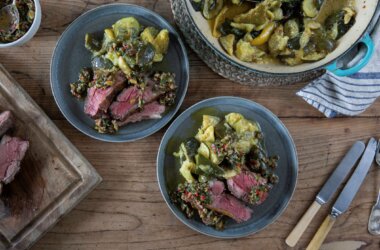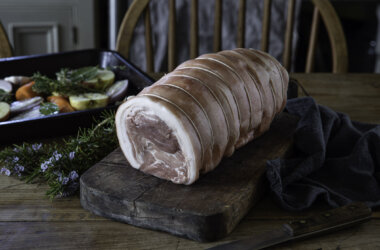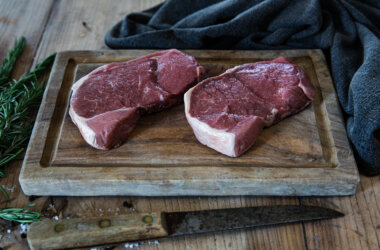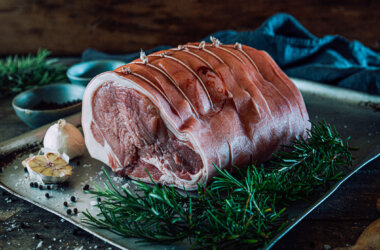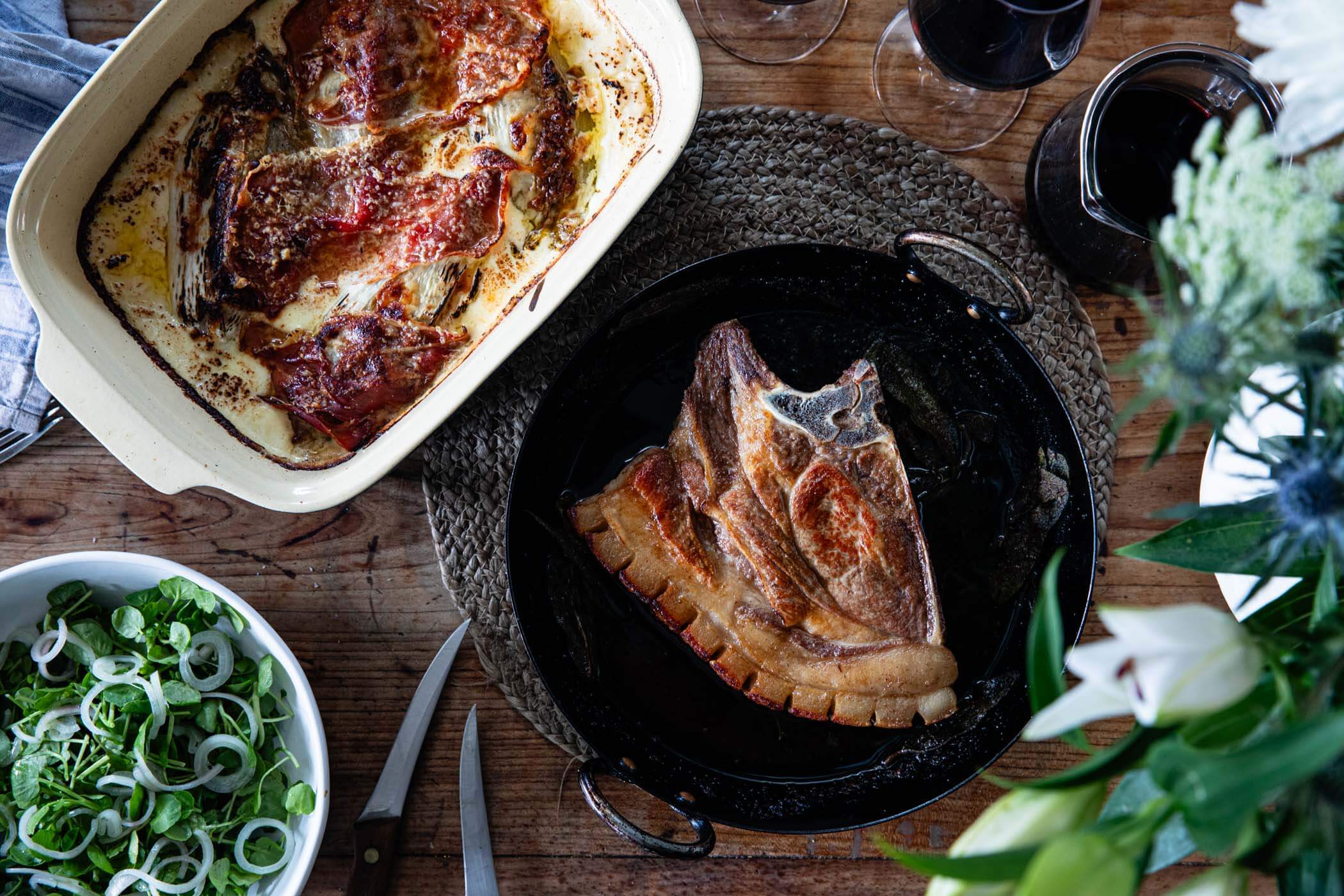
Essentially a Côte de Porc, these shoulder chops are butchered from the equivalent of the fore rib on a side of beef and are extremely delicious. This Pork Shoulder Chop with Endive Gratin and Comté is a perfect match. Traditionally, an endive gratin is a dish in its own right: bubbling and comforting, the endives tucked beneath a blanket of jambon noir, most often served with a well-dressed green salad. It’s a dish that has enjoyed a life scribbled across the blackboards of bistros all over France.
All of which is to say, it’s very delicious. And while I’m sure some ideologues of classic French bistro food might be appalled to see it alongside a pork chop, it’s a fantastic combination. The natural bitterness of the endive is a joyous foil to the fatty, brown butter-infused pork.
There are other standout ways to enjoy this cut too. Henry Harris serves his Pork Shoulder Chop with Anchovy & Lemon Dressing, paired with grilled fennel and salad. And another of mine complements the richness of the pork with Roast Shallots and Romesco Sauce.
Serves 2 (hungry people)
Ingredients
For the Gratin
Method
Start with the Gratin
- Place the milk, thyme, black peppercorns and garlic in a saucepan and bring to a simmer for 5 minutes. Turn off the heat and leave to infuse for 20 minutes.
- In a separate pan, melt the butter until gently frothing, then stir in the flour to form a roux. Cook over a low heat for 2–3 minutes.
- Strain the infused milk through a sieve, then gradually add it to the roux, whisking continuously until smooth. Grate in half the Comté and whisk until fully melted and incorporated, then stir in the double cream. Taste and adjust the seasoning as needed.
- Preheat the oven to 190°C.
- Place the endives in a suitably sized ovenproof dish. Season well with salt and black pepper, and drizzle with olive oil. Roast for 12–15 minutes.
- Remove from the oven, pour over the béchamel, and lay the jambon over the endives. Finely grate the remaining Comté on top, then return to the oven for 25–30 minutes, until golden and bubbling.
Meanwhile, Cook the Pork Shoulder Chop
- Remove the pork shoulder chop from the fridge and its packaging about an hour before cooking, allowing it to come to room temperature.
- Preheat the oven to 180°C.
- Score the skin at roughly ½-inch intervals, cutting through the rind but not into the meat. Season the chop generously with sea salt.
- Set a large cast-iron skillet or heavy frying pan over a low heat. Stand the chop upright with the rind facing down. Add a little oil to get things started, then begin rendering and crisping the rind. This step takes about 15 minutes. Be patient and rotate the chop as needed to ensure the entire rind crackles evenly.
- Once the rind is fully crackled, turn the heat up to medium. Lay the chop flat and sear one side for 2 minutes until caramelised, then flip and repeat on the other side.
- Reduce the heat, add the butter and sage leaves to the pan, and as the butter browns, baste the chop generously.
- Transfer the pan to the oven and cook for 6–8 minutes, aiming for an internal temperature of around 58°C. The residual heat will bring it up to 62–64°C as it rests. Remove from the oven and stand the chop on the flat bone to rest in the pan for at least 15 minutes.
- To serve, carve the meat away from the bone, being sure to remove the small blade bone. Slice thickly and spoon over some of the sage butter and resting juices from the pan.
For the Salad
- Slice the shallots into rings and douse with a good splash of vinegar. Set aside to sit for 10 minutes.
- Meanwhile, whisk the Dijon mustard with 2 tablespoons of vinegar and a pinch of salt. Slowly pour in the olive oil while whisking continuously until the dressing is emulsified.
- Place the watercress in a salad bowl, toss with the dressing, then scatter the pickled shallot rings over the top.

